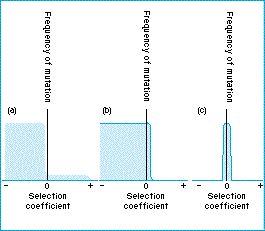Molecular evolution and neutral theory - What is the neutral theory?

The neutral theory
The neutral theory of molecular evolution is that most evolutionary change at the molecular level is driven by random drift rather than natural selection. The neutral theory does not suggest that random drift explains all evolutionary change: natural selection is still needed to explain adaptation. However, the neutral theory states that evolution at the level of the DNA and proteins, but not of morphology, is dominated by random processes; most evolution at the molecular level would then be non-adaptive.
The neutral theory can be contrasted with the idea that almost all molecular evolution has been driven by natural selection.
The difference between the two ideas can be understood in terms of the frequency distribution for the selection coefficients of mutations, or genetic variants. Nobody disputes what happens to the frequency of a mutation if it has a positive, negative or zero selection coefficient. As the diagram illustrates, the argument is over how likely it is that mutations will arise with one selection coefficient or another to begin with.
Figure: (a) According to the selectionists, neutral mutations are rare and there are enough favorable mutations to account for all molecular evolution. (b) Neutralists believe there are more neutral, and hardly any selectively favored mutations. (c) The theory of pan-neutralism, according to which all mutations are selectively neutral.
| Next |



